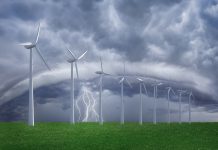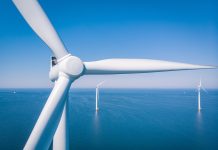Ice buildup on wind-turbine blades not only has the potential to cause structural damage, but it can also seriously curtail a turbine’s overall power output.
A special coating developed by Phazebreak has proven to be a protective shield against blade icing while also ensuring the turbine is generating energy efficiently.
The innovative coating contains phase-changing materials that expand in cold temperatures, according to Mariza Browning, CEO of Phazebreak.
“When the temperature drops to 32 degrees, the materials start expanding,” she said. “It creates tension on the surface to help ice not anchor. It’s also very slippery, and when it cures, it cures like a shell up to four millimeters thick. It also protects from bird strikes or anything heavy that could hit it. It won’t shatter, and it’ll protect underneath. We’ve been installing it over LED tape or coatings. It’s very repellent. Even bugs don’t stick to it. It self-cleans because of what it’s made out of. Everything just kind of washes away because it repels everything.”
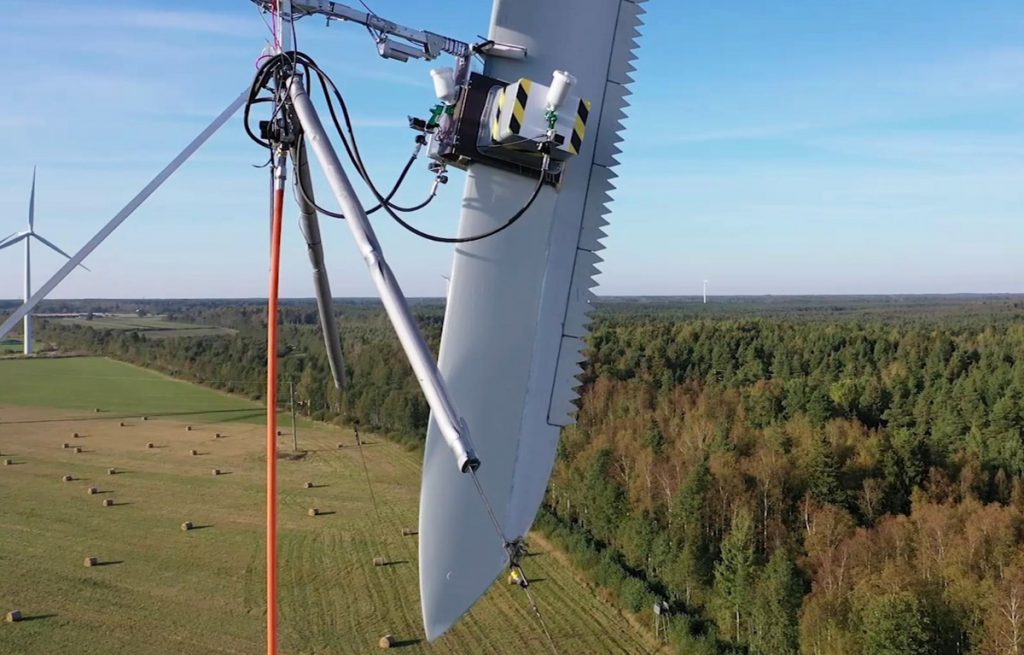
Not just for Ice
Although designed for cold-weather environments, the coating can even repel other unwelcome elements such as dust, according to Browning.
“It could protect from debris or in India, for example, with dust,” she said. “They have a lot of issues with the blades getting really dusty and stuff attaching to them. This coating would prevent that from happening.”
Primarily though, Phazebreak’s coating is being marketed to assets spinning in harsh, wintery environments, according to Browning.
“We want to change the conversation from ice removal to ice mitigation,” she said. “We want to be a solution for mitigating the effects of ice accumulation on renewable energy assets, as well as traditional energy sources. We want to support green industries.”
Listening to Customers
Phazebreak begins that journey, according to Browning, by listening to potential clients, learning what their issues may be, and asking questions such as: What part of the country are they in? What do their turbines do?
“Many of them have an automatic shutoff, and with the coating, if they turn the turbines off, I would tell them that with our coating, their turbines are going to come online much faster than if they didn’t have the coating, because we’ve seen that over and over again with the ones that we’ve coated over the years: They’re the first ones to come back online because they don’t have ice anchored to them,” she said. “They’re very, very quick to come back online, if that is the case.”
It’s also important for Browning to know how a client will measure the success of the coating.
“Are they going to compare it to other turbines in the same park that would give them real time differences, or are they going to compare it to the average power output from previous years and the year that they’re coated?” she said. “It’s important to know that they do have a way to measure the success of the coating, because if they just put it on, and they don’t really know what they’re gaining, they may not buy the coating in the future. But when they can measure it, it’s a big difference. I want them to have that data and be able to gauge the value.”
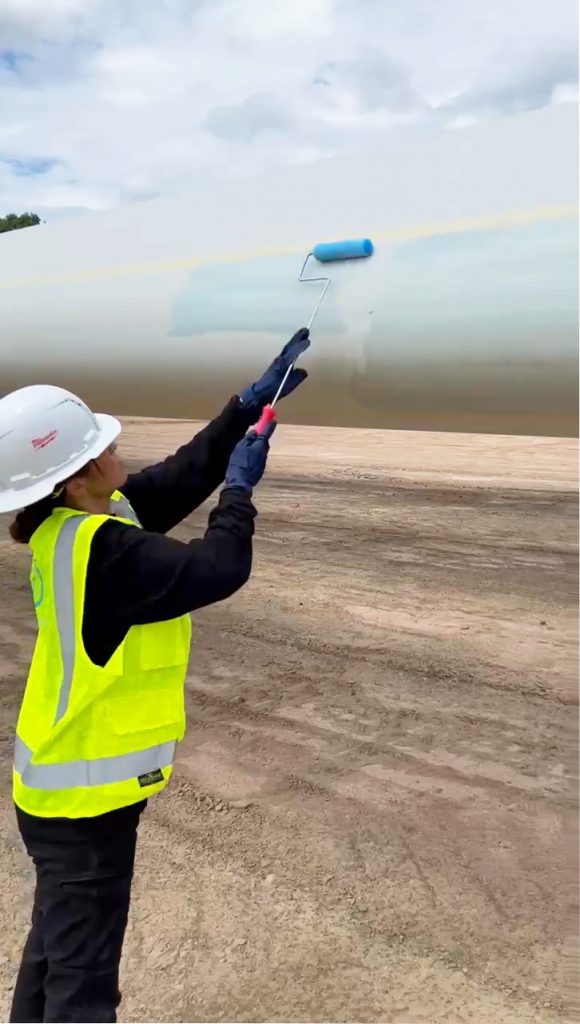
Browning pointed out that, even though several methods exist to compare the success of the coating, Browning’s preferred method is to compare a coated turbine that’s next to an uncoated one, rather than comparing a previous year of uncoated turbines to a current one.
“I think the best way to gauge it is when they’re right next to each other during the same ice event,” she said. “Because if you compare it on a year-to-year basis, it might be compared to a milder winter that didn’t have ice.”
Military Origins
Phazebreak’s work with the wind-energy industry has been short; however, the history behind the company’s innovative coating goes back years to when Browning and her associates were participating in a government bid to find an ice mitigation coating for a Navy issue. The original inventors who discovered the formula and applied for the patent were chemists, not marketing people, according to Browning.
“They just kind of sat on the patent, and my partner, who is in aviation and has been in aviation for 25 years, when he heard about this product, he immediately thought, ‘I want to buy the patent for aviation purposes,’ and he bought the patent,” she said.
Unfortunately for those original plans, but fortunately for the wind industry, Browning’s partner found it would be too difficult to get FAA approvals, so they sent their data to a third-party lab in Canada who were very encouraged by the ice-reduction factors measured in a wind tunnel, according to Browning.
“They introduced us to one of the largest wind-energy companies that was looking for solutions for icing on its blades,” she said. “We started to quote our first turbine in 2018, and those results were really promising. We later did another trial with the same company for a 50-50 comparison in two different states. They left 50 uncoated in each park to compare. That year, they had a 36-percent increase in revenue on the blades that had been coated vs. the uncoated blades. They went gangbusters after that, and we’ve coated 5,000 blades so far.”
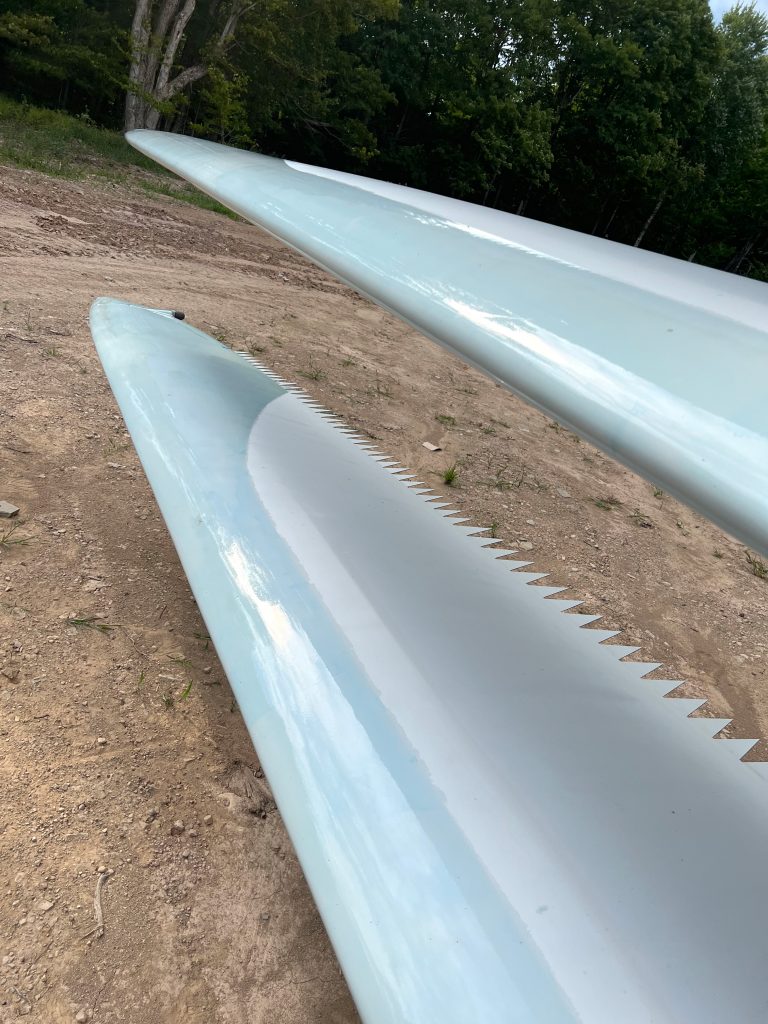
More Positive Results
Further validating Phazebreak’s impressive coating are results gathered from a wind farm in Oklahoma last year where severe ice storms in Texas and Oklahoma caused havoc with the energy grid, according to Browning.
“We had just coated one of their sites, and they had a 109-percent increase in revenue during that period on the coated vs. the non-coated turbines,” she said. “That’s basically how we started. We decided to go with wind, and now we’ve developed a second coating that can be used for power lines, and we’ve done our third-party testing in the lab.”
Phazebreak was also scheduled to launch that secondary coating for power lines at Wind Energy Hamburg September 27-30.
That next phase, for lack of better words, is something Browning said she is particularly proud of within the company’s short history.
“I was really hungry to help and solve that problem, because we had heard from wind-energy operators that also have power lines that, in some areas in Canada, if a power line gets too heavy with ice, it actually brings the whole thing down,” she said. “I feel like this could bring the perfect solution to those issues.”
Dropping Rates
Also, according to Browning, when Phazebreak first started in 2018, the rates being quoted to install the coating uptower were in the range of thousands and thousands of dollars; however, over time, the company has been able to form its own inhouse team that can coat turbine blades on the ground whenever there’s a repowering project or new construction planned.
“That’s been really helpful to get the coating on the blades and get the data that they are outperforming the other turbines that have not been coated,” she said. “But also, we have been working with as many maintenance companies as we can to ask them to please try to get their numbers to a more reasonable rate so they can apply our coating. We’ve been able to have the price come down to about $5,000 per turbine in general from rope access, robots, platforms, and all of the different mediums used to coat the blades. That rate is really, really inexpensive compared to what it used to be.”
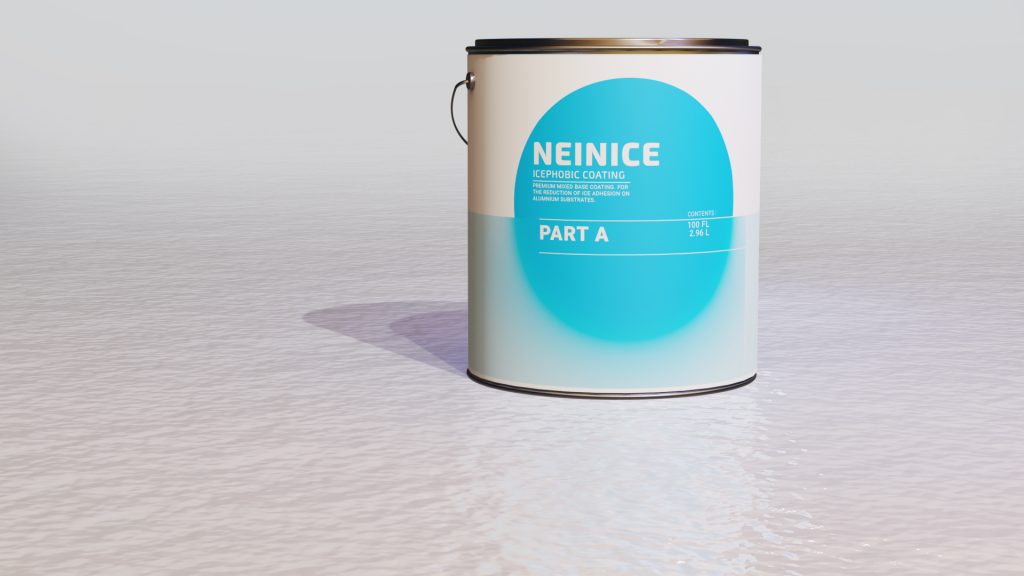
Wind and Beyond
The raw stats alone show Phazebreak’s technology will be a big help to the wind industry. There are 341,000 wind turbines globally with 78,800 of those in the U.S. Of those 78,800 turbines, 28,000 are in ice-affected areas, according to Browning. But Phazebreak wants to ensure ice and other factors don’t negatively affect even more industries.
“That’s why our next focus is on solar panels,” she said. “Eventually, of course, I want to go into aviation and maritime and more, but there’s so much momentum in these different aspects that we might as well keep going and try to help mitigate ice in all of these different industries.”
Looking to the future of renewables, Browning said she wants Phazebreak to be a part of all the incentives for green energy everywhere. “In Kansas City, where I live, they’re redoing our airport and they’re installing a ton of solar panels to power the airport,” she said. “We’re going to see more in innovations like that where they’re realizing this is a way to save money and create energy, and we want to be there to help them prevent ice from shutting their systems down.”
More info www.phazebreak.com
















